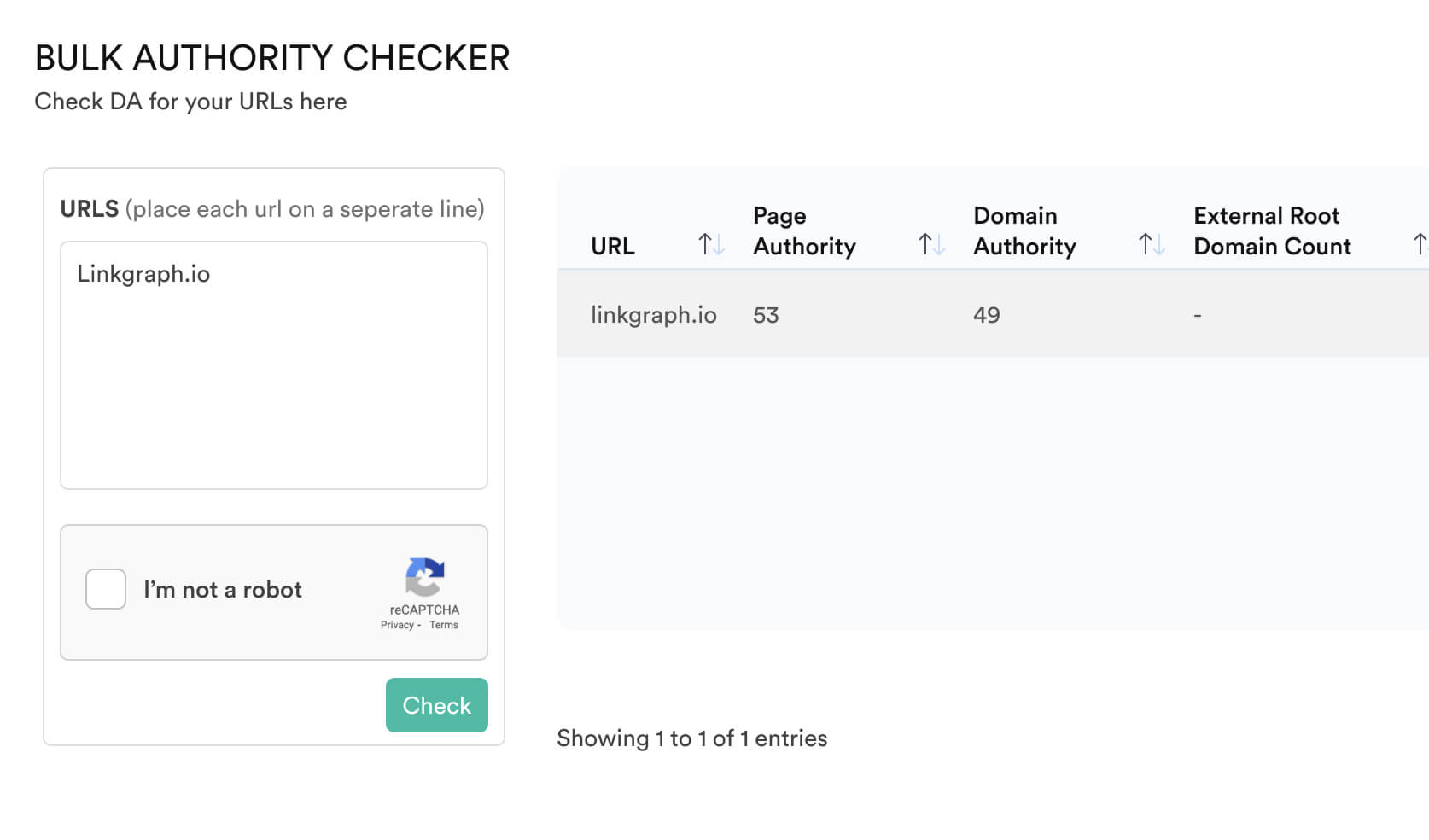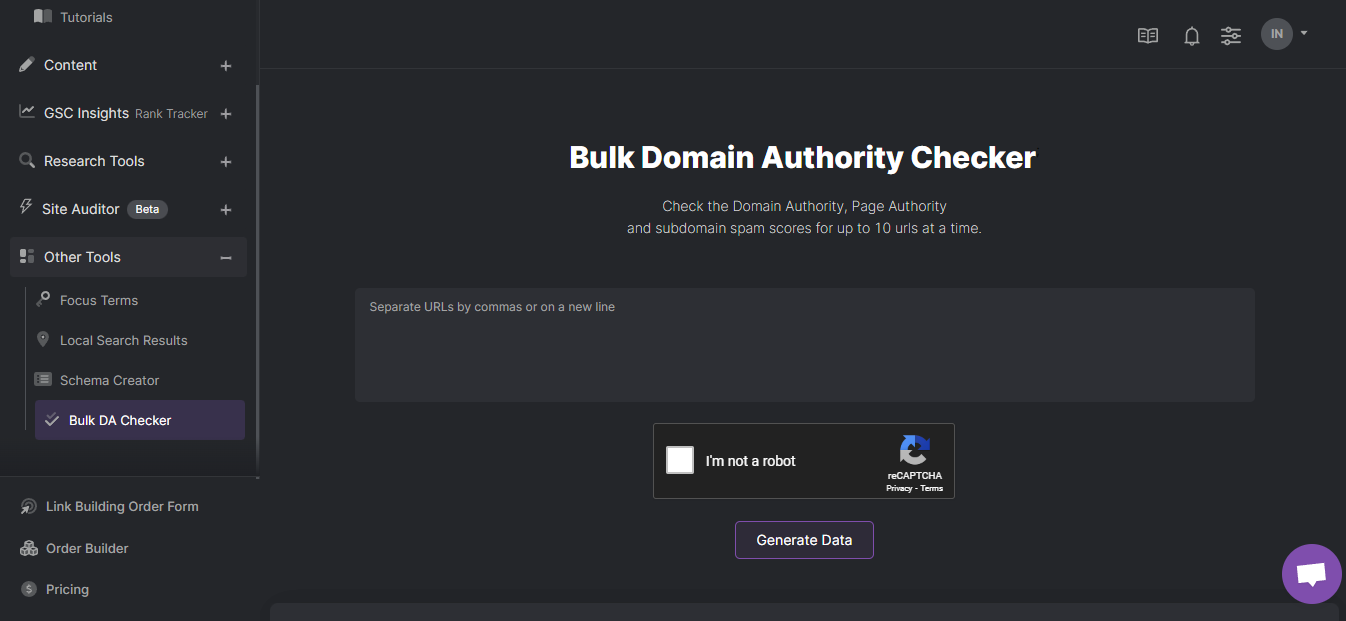-
Services

-
-
-
Managed SEO Banner
-
-
-
Authority Building
Authority Building -
Link Building Service
-
HARO Link Building
-
Digital PR
-
Publisher Outreach
-
Guest Posting
-
Partnership-led SEO
-
Local SEO
Local SEO -
GMB Management
-
Local SEO Services
-
-
-
Technicals
Technicals -
SEO Auditing
-
Website Migrations
-
Page Speed Optimization
-
Technical SEO
-
Content
Content -
Content Strategy
-
Copywriting
-
Keyword Research
-
On-Page SEO Services
-
Blog Writing Services
-
-
-
Paid Media Management
Paid Media Management -
Google Ads
-
Facebook Ads
-
PPC
-
Amazon Ads
-
Other Services
Other Services -
Our Blueprint
-
SEO Advisory
-
Brand Defense
-
Conversion Rate Optimization
-
Youtube SEO
-
See All Services
-
-
-
-
-
Chat with us
Not sure where to start? Chat with us
-
-
-
Free consultation
 (929) 377 1035
(929) 377 1035
-
-
-
-
SEO Software

-
-
-
Software SEO Banner
-
-
-
Search Atlas
Search Atlas -
Search Atlas SEO Software
-
Blog Topic Generator
-
Content Audit Tool
-
Content Planner
-
Competitor Research
-
Keyword Research
-
-
-
Free Tools
Free Tools -
Bulk DA Checker
-
SEO Content Optimizer
-
SEO Content Assistant
-
Rank Tracking
-
Keyword Research
-
Backlink Analysis
-
-
-
-
-
Chat with us
Not sure where to start? Chat with us
-
-
-
Phone Number
Free consultation (929) 377 1035
(929) 377 1035
-
-
-
-
For Agencies

-
-
-
Agency Services
Agency Services -
White Label Link Building
-
White Label SEO
-
White Label SEO Software
-
White Label PPC Services
-
-
-
Video Section

-
-
-
-
-
Chat with us
Not sure where to start? Chat with us
-
-
-
Phone Number
Free consultation (929) 377 1035
(929) 377 1035
-
-
-
-
Industry Solutions

-
-
-
By Industry
By Industry -
SEO for B2B Companies
-
SEO for Ecommerce Brands
-
SEO for SaaS Companies
-
SEO for Healthcare Companies
-
SEO for Government
-
SEO for Enterprise Companies
-
SEO for Law Firms
-
SEO for Dentists
-
-
-
Blank space
-
SEO for Doctors
-
SEO for Startups
-
National SEO
-
International SEO
-
Small Business SEO
-
Local SEO
-
Big Commerce SEO
-
Shopify SEO
-
-
-
The Ultimate SEO and Digital Marketing Resource NetworkSkyrocket your SEO strategy with LinkGraph's expert resources. Browse our content to stay ahead of the curve, drive business growth, and crush your SEO goals.
-
-
-
-
-
Chat with us
Not sure where to start? Chat with us
-
-
-
Phone Number
Free consultation (929) 377 1035
(929) 377 1035
-
-
-
- Case Studies
-
Resources

-
-
-
Resources
-
-
-
-
-
-
Not sure where to start? Chat with us
-
-
-
Free consultation
 (929) 377 1035
(929) 377 1035
-
-
-
-
About

-
-
-
Hi. We’re LinkGraph.LinkGraph is an award-winning, full-service SEO, digital marketing, content strategy and web design agency. We bring passion and pride to all that we do.
-
-
-
About
-
-
-
-
-
-
-
-
Free consultation
 (929) 377 1035
(929) 377 1035
-
-
-
-
Services

-
-
-
Managed SEO Banner
-
-
-
Authority Building
Authority Building -
Link Building Service
-
HARO Link Building
-
Digital PR
-
Publisher Outreach
-
Guest Posting
-
Partnership-led SEO
-
Local SEO
Local SEO -
GMB Management
-
Local SEO Services
-
-
-
Technicals
Technicals -
SEO Auditing
-
Website Migrations
-
Page Speed Optimization
-
Technical SEO
-
Content
Content -
Content Strategy
-
Copywriting
-
Keyword Research
-
On-Page SEO Services
-
Blog Writing Services
-
-
-
Paid Media Management
Paid Media Management -
Google Ads
-
Facebook Ads
-
PPC
-
Amazon Ads
-
Other Services
Other Services -
Our Blueprint
-
SEO Advisory
-
Brand Defense
-
Conversion Rate Optimization
-
Youtube SEO
-
See All Services
-
-
-
-
-
Chat with us
Not sure where to start? Chat with us
-
-
-
Free consultation
 (929) 377 1035
(929) 377 1035
-
-
-
-
SEO Software

-
-
-
Software SEO Banner
-
-
-
Search Atlas
Search Atlas -
Search Atlas SEO Software
-
Blog Topic Generator
-
Content Audit Tool
-
Content Planner
-
Competitor Research
-
Keyword Research
-
-
-
Free Tools
Free Tools -
Bulk DA Checker
-
SEO Content Optimizer
-
SEO Content Assistant
-
Rank Tracking
-
Keyword Research
-
Backlink Analysis
-
-
-
-
-
Chat with us
Not sure where to start? Chat with us
-
-
-
Phone Number
Free consultation (929) 377 1035
(929) 377 1035
-
-
-
-
For Agencies

-
-
-
Agency Services
Agency Services -
White Label Link Building
-
White Label SEO
-
White Label SEO Software
-
White Label PPC Services
-
-
-
Video Section

-
-
-
-
-
Chat with us
Not sure where to start? Chat with us
-
-
-
Phone Number
Free consultation (929) 377 1035
(929) 377 1035
-
-
-
-
Industry Solutions

-
-
-
By Industry
By Industry -
SEO for B2B Companies
-
SEO for Ecommerce Brands
-
SEO for SaaS Companies
-
SEO for Healthcare Companies
-
SEO for Government
-
SEO for Enterprise Companies
-
SEO for Law Firms
-
SEO for Dentists
-
-
-
Blank space
-
SEO for Doctors
-
SEO for Startups
-
National SEO
-
International SEO
-
Small Business SEO
-
Local SEO
-
Big Commerce SEO
-
Shopify SEO
-
-
-
The Ultimate SEO and Digital Marketing Resource NetworkSkyrocket your SEO strategy with LinkGraph's expert resources. Browse our content to stay ahead of the curve, drive business growth, and crush your SEO goals.
-
-
-
-
-
Chat with us
Not sure where to start? Chat with us
-
-
-
Phone Number
Free consultation (929) 377 1035
(929) 377 1035
-
-
-
- Case Studies
-
Resources

-
-
-
Resources
-
-
-
-
-
-
Not sure where to start? Chat with us
-
-
-
Free consultation
 (929) 377 1035
(929) 377 1035
-
-
-
-
About

-
-
-
Hi. We’re LinkGraph.LinkGraph is an award-winning, full-service SEO, digital marketing, content strategy and web design agency. We bring passion and pride to all that we do.
-
-
-
About
-
-
-
-
-
-
-
-
Free consultation
 (929) 377 1035
(929) 377 1035
-
-
-
Bulk DA Checker Tool

The Bulk DA Checker
The bulk domain authority checker tool allows you to check the authority of different domains. It’s a popular tool for SEO professionals focused on link building , often considered the most challenging part of the job. It allows you to check the domain and page authorities of outside sources and link urls so you can determine how much link equity would be transferred if the outside source were to link to your site or vice versa. This can help you find good websites and backlinks to be associated with to improve your link profile while also avoiding low quality sites and bad links.
How to use the Bulk DA Checker:
This bulk domain authority checker tool is a useful SEO tool that allows you to determine how authoritative different websites are. It’s a popular tool for search engine optimization professionals focused on link building. The authority scores for domain and page authority signify how much link equity would be transferred from a “do-follow” outlink from a specific site or page if it linked to your site. Increasing domain authority through building links has been quantitatively shown to improve your site’s ability to rank well in search engines for your content/keywords. The Moz Trust and Moz Spam Score metrics tend to be less meaningful when you study larger website datasets, but on occasion can help you spot and avoid low-quality websites.
Check out our FAQ section below for answers to any questions you might have.

SEO Software
DA Scores
Domain authority is determined on a logarithmic scale, meaning that individual domain metrics don’t necessarily increase or decrease the score equally. Rather, more important metrics will have a more noticeable effect whereas less important ones will have a less noticeable impact. Brand new domains start with a DA of 1, and due to these logarithmic calculations, it’s much easier to increase a lower domain authority score than it is to increase a high one.
Typically, sites with a high-volume of quality backlinks and high external link popularity will have top end DA scores, whereas new sites or those of smaller businesses with fewer links will be on the lower end. Each website’s DA can be affected by the other sites it is associated with. It’s crucial to remember, however, that domain authority is more of a comparable metric of a site’s quality rather than an absolute one. The internet is a near-infinite resource, and it’s impossible to be in competition with the entire web at once. Instead, it’s important to look at your direct competitors within your site’s niche and aim to have a higher DA than their sites. You only need to outdo your competition to enjoy higher overall rankings.
Influencing Domain Authority
It is difficult to influence DA directly because the score is impacted by an aggregate of various metrics and link data. This was done intentionally as an effort to simulate the vast amount of factors Google takes into account when determining its rankings. While it’s true that DA and PA do not directly impact Google rankings, they are useful as proxies to help us understand what Google sees when evaluating a page. The most reliable way to improve your DA and PA scores is to simply improve your overall SEO efforts. Most importantly, you’ll need to work on building a healthy link profile from well-linked pages that have strong social signals.
Link Building Strategy
While this may seem overly simplified, you really only need one link-building strategy, and that is to create high-quality content that is link worthy. For certain websites, this can mean creating long articles with quality internal links, viral-ready video content, or interactive materials, but this doesn’t have to be the case. Some sites are able to gain quality links from tools they create or from services they provide. It all depends on your goals and your niche. You can think of your strategy as your overall goal for link building, and you’ll get there by employing various tactics.
Community Outreach
Outreach is an essential component to any successful SEO effort, and it’s essentially just introducing others in your niche to your content. This may be traditional material, such as blogs or articles, that others will enjoy because of the quality of the content, or by posting content to social media. This should be something unique that you offer, or that you can at least do better than any competitor. There’s a chance that it may not be “content” at all—you may be offering a service, showing a product, or even profiling a personality. It’s anything that can be worthy of a link and/or a share on social media. The more social shares you have, the stronger your sites social signals are, offering you more chances to increase your traffic. If you’re struggling to find people or sites to reach out to, you might search for those who mention your keywords in their content or sites who already link to content or services similar to those you provide.
Guest blogging is another old trick for link building. This is essentially where you write some content for another web page in your niche and you link to yourself in order to increase your own web traffic. A potential downside to this tactic is that it’s so common, but you may be surprised what opportunities you can uncover if you pitch to similar sites even if they don’t explicitly state they accept guest bloggers.
Optimize
Your Site
Of course, you can’t expect to maintain web traffic or find good link building opportunities if you aren’t doing a good job of optimizing your site for the best possible experience. While it’s always great to have quality content and good links from different domain names, these efforts won’t mean much if you aren’t offering a great user experience. It’s important to make sure your content is optimized for all users, which will generally mean having two separate sites—one for desktop and laptop users and one for mobile users. Considering that over half of web traffic these days is from mobile devices, having a site that’s inconvenient for mobile users can absolutely destroy your chances at success. You might also program your site to send a notification to interested users when you have more relevant content for them.
With digital assistants and smart devices continuing to rise in popularity, it’s also important to optimize your content for voice search. Some experts are estimating radical increases in voice search in the coming years, so metrics like Alexa rank may become just as important as the Moz rank over a short passage of time. To raise voice rankings, you’ll want to have some content that prioritizes natural language over keywords, as voice search is much more conversational. This also means you’ll need to have some content that doesn’t get too technical, as you’ll need to at least partially appeal to a vast audience, regardless of target audience. Since voice search often involves searching the local area, you’ll likely want to put a greater focus on local SEO efforts, as well.
FAQ
DA is a score created by Moz to predict website rankings on search engine results pages (SERPs). Scores range from 1-100, with higher scores indicating a higher chance of a good ranking. There are many major factors that go into determining a DA score including the number of high-quality backlinks, quality internal links, the number of unique referring domains, and the overall moz domain authority of said domains. Generally speaking, getting backlinks from websites with high moz domain authority is strongly connected to building your own site’s DA.
Google is generally seen as the dominant search engine, meaning its ranking will be one of the most important SEO metrics for any site. Google will use an algorithm or a collection of algorithms to make decisions about its rankings. It’s important to note that DA is not used as a direct metric to determine their SERPs.
Page authority refers to the likelihood of a specific web page ranking in search results, or the authority of an individual page. Like a site’s overall domain authority score, PA is measured from 1-100, with higher scores meaning pages are more likely to rank higher in search engine results. Also, similar to DA, PA is determined by a variety of page SEO metrics that help Moz’s machine-learning algorithms to compare the page to thousands of other search results to produce a moz rank. It must be noted that when determining PA, Moz does not take on-page SEO elements such as keyword use or content optimizations into account.
This bulk domain authority checker tool is a useful SEO tool that allows you to determine how authoritative different websites are. It’s a popular tool for search engine optimization professionals focused on link building. The authority scores for domain and page authority signify how much link equity would be transferred from a “do-follow” outlink from a specific site or page if it linked to your site. Increasing domain authority through building links has been quantitatively shown to improve your site’s ability to rank well in search engines for your content/keywords. The Moz Trust and Moz Spam Score metrics tend to be less meaningful when you study larger website datasets, but on occasion can help you spot and avoid low-quality websites.
We used practically every domain authority checker tool we could find to quickly check the authority of multiple URLs at the same time. But when checking each url of the website, we frequently experienced tools breaking, running slowly, or we faced other difficulties. We integrated our systems with the Moz API so we could analyze our database of millions of domains programmatically. We’ve built a variety of SEO tools for our clients including link analyzers, rankings checkers, website authority monitors, chrome extensions, and others. We are offering this completely free website authority checker to help you check your link popularity as well. Happy DA/PA checking!
Privacy Overview
| Cookie | Duration | Description |
|---|---|---|
| __cfruid | session | Cloudflare sets this cookie to identify trusted web traffic. |
| __hssrc | session | This cookie is set by Hubspot whenever it changes the session cookie. The __hssrc cookie set to 1 indicates that the user has restarted the browser, and if the cookie does not exist, it is assumed to be a new session. |
| cookielawinfo-checkbox-advertisement | 1 year | Set by the GDPR Cookie Consent plugin, this cookie is used to record the user consent for the cookies in the "Advertisement" category . |
| cookielawinfo-checkbox-analytics | 11 months | This cookie is set by GDPR Cookie Consent plugin. The cookie is used to store the user consent for the cookies in the category "Analytics". |
| cookielawinfo-checkbox-functional | 11 months | The cookie is set by GDPR cookie consent to record the user consent for the cookies in the category "Functional". |
| cookielawinfo-checkbox-necessary | 11 months | This cookie is set by GDPR Cookie Consent plugin. The cookies is used to store the user consent for the cookies in the category "Necessary". |
| cookielawinfo-checkbox-others | 11 months | This cookie is set by GDPR Cookie Consent plugin. The cookie is used to store the user consent for the cookies in the category "Other. |
| cookielawinfo-checkbox-performance | 11 months | This cookie is set by GDPR Cookie Consent plugin. The cookie is used to store the user consent for the cookies in the category "Performance". |
| CookieLawInfoConsent | 1 year | Records the default button state of the corresponding category & the status of CCPA. It works only in coordination with the primary cookie. |
| csrftoken | 1 year | This cookie is associated with Django web development platform for python. Used to help protect the website against Cross-Site Request Forgery attacks |
| JSESSIONID | session | The JSESSIONID cookie is used by New Relic to store a session identifier so that New Relic can monitor session counts for an application. |
| viewed_cookie_policy | 11 months | The cookie is set by the GDPR Cookie Consent plugin and is used to store whether or not user has consented to the use of cookies. It does not store any personal data. |
| Cookie | Duration | Description |
|---|---|---|
| __cf_bm | 30 minutes | This cookie, set by Cloudflare, is used to support Cloudflare Bot Management. |
| __hssc | 30 minutes | HubSpot sets this cookie to keep track of sessions and to determine if HubSpot should increment the session number and timestamps in the __hstc cookie. |
| bcookie | 1 year | LinkedIn sets this cookie from LinkedIn share buttons and ad tags to recognize browser ID. |
| bscookie | 1 year | LinkedIn sets this cookie to store performed actions on the website. |
| lang | session | LinkedIn sets this cookie to remember a user's language setting. |
| lidc | 1 day | LinkedIn sets the lidc cookie to facilitate data center selection. |
| na_id | 1 year 24 days | The na_id is set by AddThis to enable sharing of links on social media platforms like Facebook and Twitter. |
| ouid | 1 year 24 days | Associated with the AddThis widget, this cookie helps users to share content across various networking and sharing forums. |
| UserMatchHistory | 1 month | LinkedIn sets this cookie for LinkedIn Ads ID syncing. |
| Cookie | Duration | Description |
|---|---|---|
| _gat | 1 minute | This cookie is installed by Google Universal Analytics to restrain request rate and thus limit the collection of data on high traffic sites. |
| Cookie | Duration | Description |
|---|---|---|
| __hstc | 5 months 27 days | This is the main cookie set by Hubspot, for tracking visitors. It contains the domain, initial timestamp (first visit), last timestamp (last visit), current timestamp (this visit), and session number (increments for each subsequent session). |
| _ga | 2 years | The _ga cookie, installed by Google Analytics, calculates visitor, session and campaign data and also keeps track of site usage for the site's analytics report. The cookie stores information anonymously and assigns a randomly generated number to recognize unique visitors. |
| _ga_XG2FWHK2V3 | 2 years | This cookie is installed by Google Analytics. |
| _gcl_au | 3 months | Provided by Google Tag Manager to experiment advertisement efficiency of websites using their services. |
| _gid | 1 day | Installed by Google Analytics, _gid cookie stores information on how visitors use a website, while also creating an analytics report of the website's performance. Some of the data that are collected include the number of visitors, their source, and the pages they visit anonymously. |
| _hjAbsoluteSessionInProgress | 30 minutes | Hotjar sets this cookie to detect the first pageview session of a user. This is a True/False flag set by the cookie. |
| _hjFirstSeen | 30 minutes | Hotjar sets this cookie to identify a new user’s first session. It stores a true/false value, indicating whether it was the first time Hotjar saw this user. |
| _hjIncludedInPageviewSample | 2 minutes | Hotjar sets this cookie to know whether a user is included in the data sampling defined by the site's pageview limit. |
| _hjIncludedInSessionSample | 2 minutes | Hotjar sets this cookie to know whether a user is included in the data sampling defined by the site's daily session limit. |
| _hjTLDTest | session | To determine the most generic cookie path that has to be used instead of the page hostname, Hotjar sets the _hjTLDTest cookie to store different URL substring alternatives until it fails. |
| CONSENT | 2 years | YouTube sets this cookie via embedded youtube-videos and registers anonymous statistical data. |
| hubspotutk | 5 months 27 days | HubSpot sets this cookie to keep track of the visitors to the website. This cookie is passed to HubSpot on form submission and used when deduplicating contacts. |
| uid | 1 year 24 days | This is a Google UserID cookie that tracks users across various website segments. |
| Cookie | Duration | Description |
|---|---|---|
| _fbp | 3 months | This cookie is set by Facebook to display advertisements when either on Facebook or on a digital platform powered by Facebook advertising, after visiting the website. |
| anj | 3 months | AppNexus sets the anj cookie that contains data stating whether a cookie ID is synced with partners. |
| IDE | 1 year 24 days | Google DoubleClick IDE cookies are used to store information about how the user uses the website to present them with relevant ads and according to the user profile. |
| IDSYNC | 1 year | This cookie is set by Yahoo to store information on how users behave on multiple websites so that relevant ads can be displayed to them. |
| pa_crosswise_ts | 2 years | The pa_crosswise_ts cookie is set by Perfect Audience for advertising purposes based on user behavioural data. |
| pa_google_ts | 2 years | The pa_google_ts cookie is set by Perfect Audience for advertising purposes based on user behavioural data. |
| pa_openx_ts | 2 years | The pa_openx_ts cookie is set by Perfect Audience for advertising purposes based on user behavioural data. |
| pa_rubicon_ts | 2 years | The pa_rubicon_ts cookie is set by Perfect Audience for advertising purposes based on user behavioural data. |
| pa_twitter_ts | 2 years | The pa_twitter_ts cookie is set by Perfect Audience for advertising purposes based on user behavioural data. |
| pa_uid | 2 years | This cookie is set by prfct.co. This cookie is used across the websites that use same ad network to display ads to the other advertisers in the network. |
| pa_yahoo_ts | 2 years | The pa_yahoo_ts cookie is set by Perfect Audience for advertising purposes based on user behavioural data. |
| personalization_id | 2 years | Twitter sets this cookie to integrate and share features for social media and also store information about how the user uses the website, for tracking and targeting. |
| test_cookie | 15 minutes | The test_cookie is set by doubleclick.net and is used to determine if the user's browser supports cookies. |
| uuid2 | 3 months | The uuid2 cookie is set by AppNexus and records information that helps in differentiating between devices and browsers. This information is used to pick out ads delivered by the platform and assess the ad performance and its attribute payment. |
| VISITOR_INFO1_LIVE | 5 months 27 days | A cookie set by YouTube to measure bandwidth that determines whether the user gets the new or old player interface. |
| YSC | session | YSC cookie is set by Youtube and is used to track the views of embedded videos on Youtube pages. |
| yt-remote-connected-devices | never | YouTube sets this cookie to store the video preferences of the user using embedded YouTube video. |
| yt-remote-device-id | never | YouTube sets this cookie to store the video preferences of the user using embedded YouTube video. |
| yt.innertube::nextId | never | This cookie, set by YouTube, registers a unique ID to store data on what videos from YouTube the user has seen. |
| yt.innertube::requests | never | This cookie, set by YouTube, registers a unique ID to store data on what videos from YouTube the user has seen. |
| Cookie | Duration | Description |
|---|---|---|
| CSRF-TOKEN | 1 day | No description |



